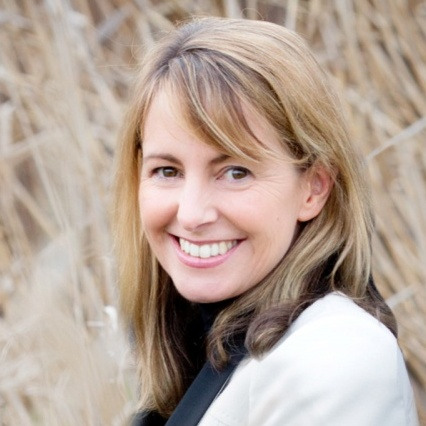Change Agents - Inspiring Change by Challenging the Norms
Part 1
I was honoured to be invited to present as one of the Keynote Speakers at the recent Australian Nursing & Midwifery Federation Tasmania Branch Annual Conference 2018, in Launceston.
The conference topic; ‘Change Agents - Inspiring Change by Challenging the Norms’ is one that has become very dear to my heart.
I spoke to the delegates for 45 minutes about what the role of being a Change Agent has meant to Gary over his 36 year medical career and more recently, how standing up for Quality Assurance and Patient Safety in the workplace, challenging nutrition paradigms, and questioning the dietary and health guidelines over the last 8 years, have impacted on our lives and those of our family.
The hardest part was speaking about the personal and professional costs to Gary. Summarising 8 years of bullying and intimidation into a couple of slides and then speaking them out loud undid me for a few minutes and I struggled to regain my composure. I want to thank the organisers and the attendees for their incredibly caring actions and the warm encouragement I received at the time, and at the dinner afterwards. These incredible 'Change Agents' are my people, standing up for what they believe in and for the health of our community.
My declaration of interest for the talk was #isupportgary and I have since I was 16 years old. I was in year 11 and Gary was a first-year med student when we started dating in 1980. Looking back, I wonder if most of our family’s health issues could have been avoided if only we had understood more about ‘food as medicine’ and the health benefits of Low Carbohydrate Healthy Fat principles all those years ago …
I suggest you make a drink and find a comfy seat because this read may take a while.
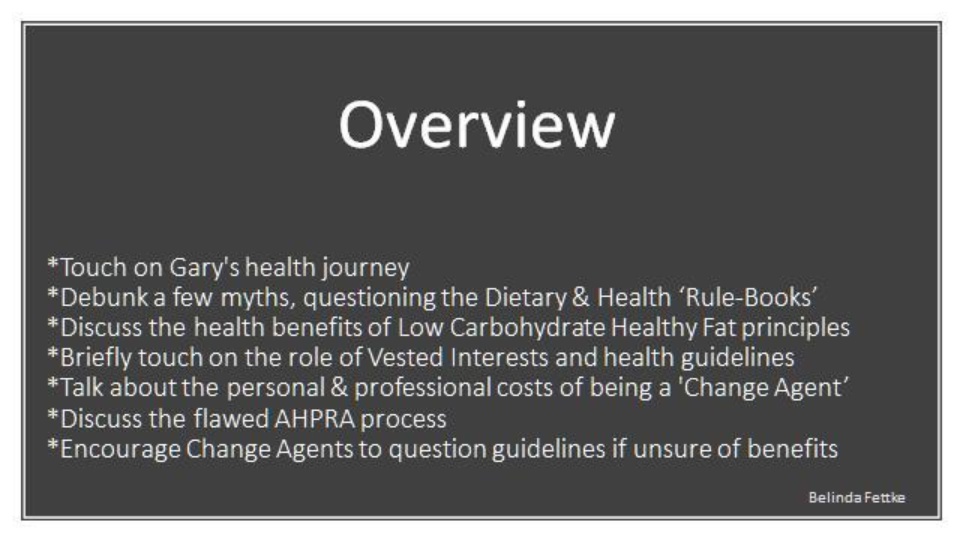
I started my presentation with a quote by Dr Rich Joseph, a resident doctor who cared for Dr Bernard Lown in hospital, someone he greatly admired for being a Change Agent in Medicine throughout his career. Dr Joseph wrote that "Dr. Lown’s example has inspired me to go to work every day with the perspective of a patient, the spirit of an activist and the heart of a healer."
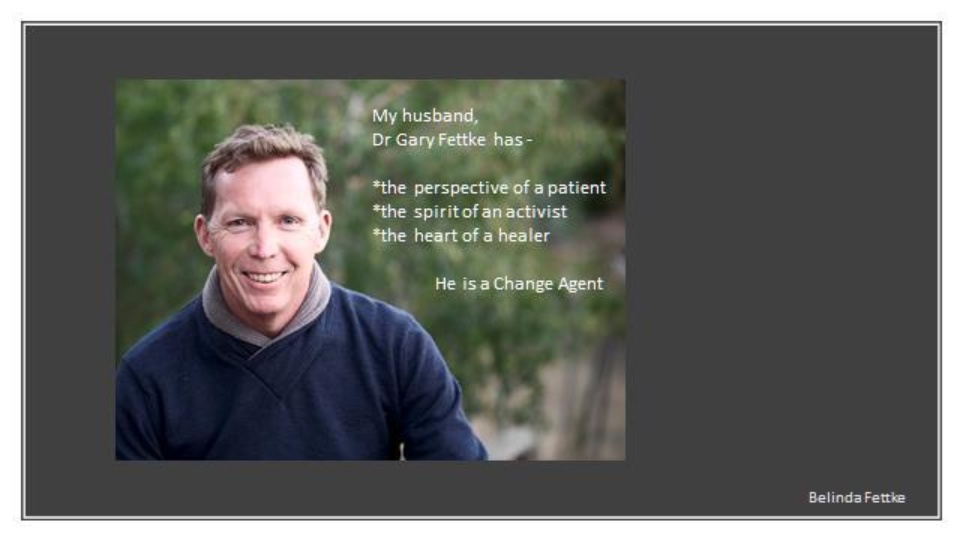
I see the same thing in Gary. “he goes to work each day with 'the perspective of a patient' - he knows what it is like, he has been a patient many times.
He has ‘the spirit of an activist’ - it’s in his genes. His grandmother was a Jewess and very outspoken about Adolf Hitler and the Nazi regime leading up to WW2. In fact, during the Nuremberg Trials war crimes, a high ranking SS officer told the court he had only ever respected 5 Jewish people and Gary’s grandmother had been one of them.
And ... there is no doubt in my mind that my husband truly has 'the heart of a healer'.
That’s what I love about him, and why I am so determined to clear his name. Gary has done nothing wrong.
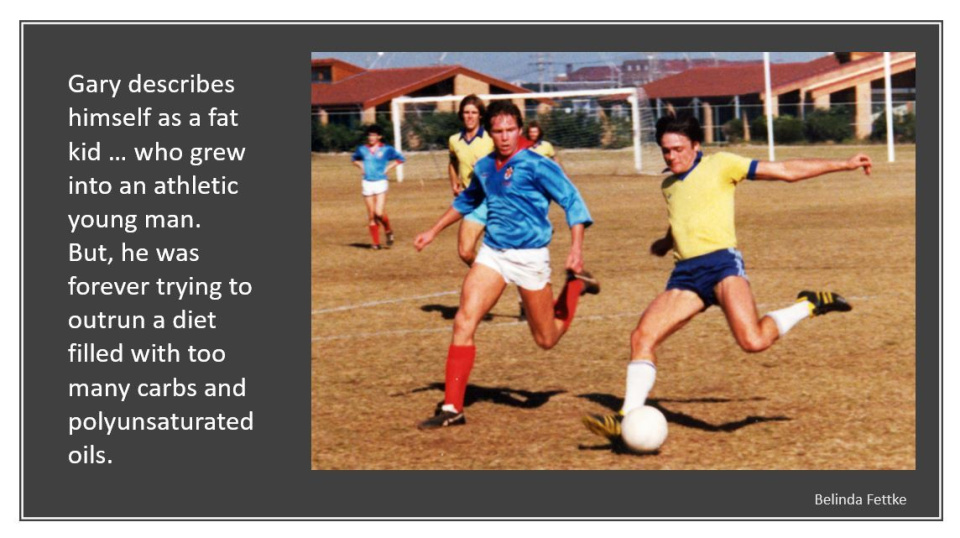
You may be aware … Gary describes himself as a fat kid who grew into an athletic young man, forever outrunning a diet filled with too many carbs and doused with polyunsaturated seed oils.
In 2000, at the age of 37, Gary was diagnosed with an aggressive pituitary tumour requiring a craniotomy to save his eyesight. This was followed by a period of intensive stereotactic radiotherapy and many years of chemotherapy. Despite modern medicine, the tumour continued to be ‘active’ and Gary had further surgery in 2004.
Over the next few years Gary ended up on a cocktail of medications, some - simply to counteract the side effects of other medications he was taking at the time.
By 2009 Gary was watching his weight creep on, he was pre-diabetic, had high blood pressure and increasing episodes of cardiac arrhythmia’s. Both of his hips have been replaced in the last 4 years.
He never gave significant thought to his diet because, as far as he was concerned, he was mostly doing the right thing.
He was eating plenty of grains, cereals, bread, pasta and rice; enjoying at least 5 vegetables and 2 fruits a day; only eating lean meats and spreading ‘heart healthy’ margarine and honey or peanut butter on his wholegrain toast. He insisted on using polyunsaturated oils for cooking, ate low-fat dairy and drank fruit juice each day.
Have Dietary Guidelines, shaped by Vested Interests and Ideology, created harm?

So, I am starting to think the Dietary Guideline recommendations back in 1992, of 6 - 11 servings of carbohydrates every day, probably wasn’t such a great idea for ANYONE let alone someone with insulin resistance, metabolic disease, or many forms of cancer!
This is the food pyramid that influenced Gary as a young doctor and no doubt most households in Australia for the next 2 decades.
It seems the Food Industry wants us to eat a wholegrain Plant-Based, low-fat, fortified cereal, soy/nut analogue diet because they can ‘formulate’ and ‘create’ all of our processed food needs. If you are interested, Gary and I discuss the role of Vested Interests and Ideology in the Evolution of our Plant-Based Dietary Guidelines in more detail here and here.

Gary made the above slide for one of his talks in America last year, pointing out that we need to send out a ‘search and rescue party’ to find the red meat and dairy in the 2013 Australian Guide to Healthy Eating!
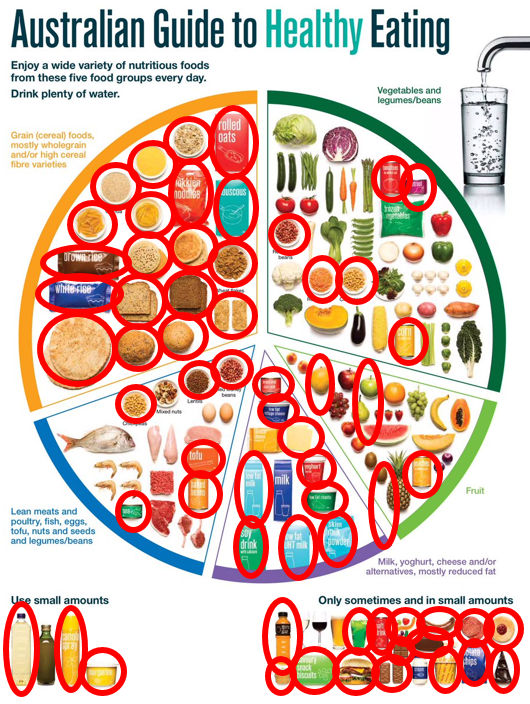
But no problems at all finding processed foods shot-gunned all over the place in the image above.
Sweet Poison - Gary's turning point
It wasn’t until Gary read David Gillespie’s book ‘Sweet Poison’ in 2012, that he started to tie sugar into his own health equation. Around the same time our pharmacist suggested Gary consider taking the drug metformin, as an adjunct to the chemotherapy he was on.
People with Type 2 diabetes - who were taking Metformin in the clinical trial were finding they had less incidence of cancer and/or their cancer was going into remission.
Gary looked into the actions of Metformin and found ‘very basically’ that it interfered with the uptake of dietary sugar. Instead of adding another medication into the mix, Gary decided to try and reduce his sugar intake and see what happened.
After he had given up sugar and been low carb for well over a year, Gary trialed going off chemotherapy. This was done under medical supervision with regular check-ups.
Obviously, Gary’s benign pituitary tumour thrives on glucose/sugar (as demonstrated very clearly in his PET scans).
He has been has been off chemo for nearly 5 years with NO sign of any cancer cell activity on blood tests or on MRI. This was impossible for him to achieve on a high carb/sugary diet.
Not only that, but Gary has managed to reduce his medications from 15 per day down to 1 ½ tablets over the last 5 years.
Nutrition Myths Busted Wide Open
The Brain Requires Ingested Glucose to Function?
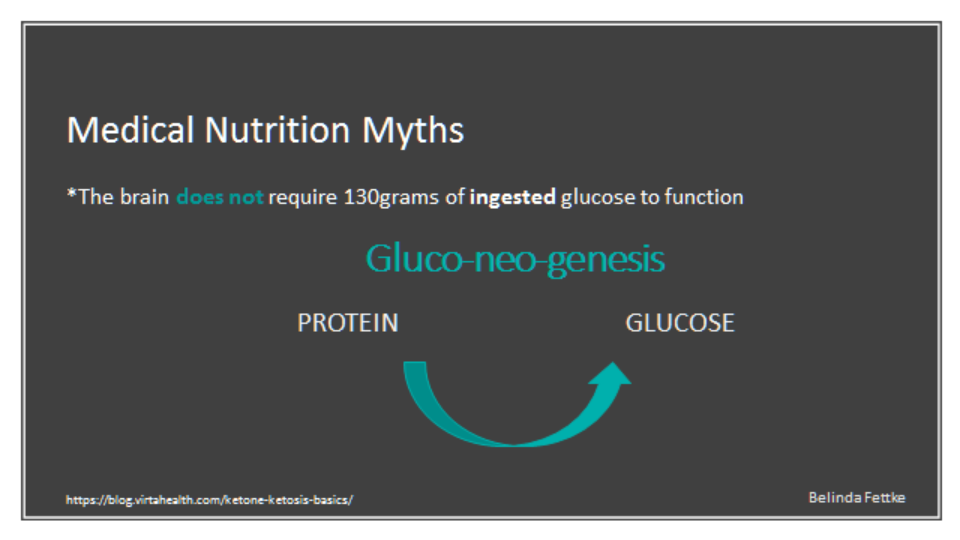
Firstly, the brain does not require 130 grams of INGESTED glucose to function.
Our body can turn PROTEIN into GLUCOSE via conversion in the liver called gluco-neo-genesis. We can also use fat to make ketone bodies for fuel. This is simple biochemistry not rocket science which is why it is surprising that the Tasmanian Medical Board of AHPRA questioned Gary's medical qualifications around safely recommending reducing sugar to his patients with diabetes.
Eskimos relied on this form of fueling before transportation connected them to the processed food industry!
The traditional Eskimo diet "shaped by glacial temperatures, stark landscapes and protracted winters" is often referred to as the Inuit Paradox. Despite Eskimo's having little in the way of plant food, no agricultural or dairy products and a diet unusually low in fruit sugar and carbohydrates, they managed to get all the macro and micro-nutrients they needed … even Vitamin C.
I know lots of people who eat less than 100g of carbohydrates each day. Gary would typically eat 30-50 grams of carbohydrate. HE CHOOSES to eat this way because his knows that his form of cancer feeds on glucose sugars. Gary finds it easy to be in Nutritional Ketosis and stay healthy.
BTW, Nutritional Ketosis is VERY different to Ketoacidosis, despite sounding similar and are often confused, even amongst health professionals. Check out Dr Steve Phinney’s article on the Virta Health website for more information.
Saturated Fat and Heart Disease?
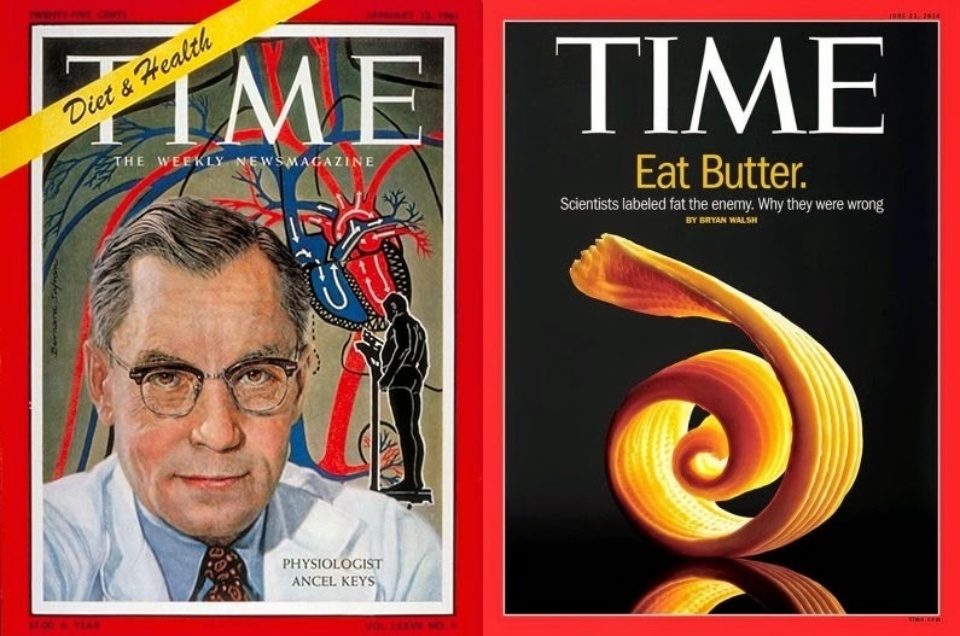
Next myth … Saturated Fat does not clog arteries nor does it cause heart disease … this thinking first came about in the late 1950's following President Eisenhower's heart attack and by the 1970’s the American Heart Association played a crucial role in blaming fat and cholesterol for heart disease - tied to Ancel Key’s 7 countries study. From there, the press, the American Congress via the McGovern Report, and the Department of Agriculture hastily adopted the 'Saturated Fat is bad' hypothesis which led to dietary guidelines world-wide advocating low-fat for ‘heart health’. This, despite John Yudkin and others, questioning the role of sugar in heart disease around the same time.
The thinking was … that saturated fat blocked drains, so it must block arteries? Right??? Wrong … Saturated fat congeals at room temperature in Tasmania, but not in the tropics!
Just like coconut oil… butter, lard and bacon fat all solidify in kitchen pots and pans, in the fridge, and yes, in drains in colder temperatures, but our body temperature is 36-37 degrees. Fat does NOT congeal, or solidify, in our blood vessels at body temperature.
Don't Fear Cholesterol!
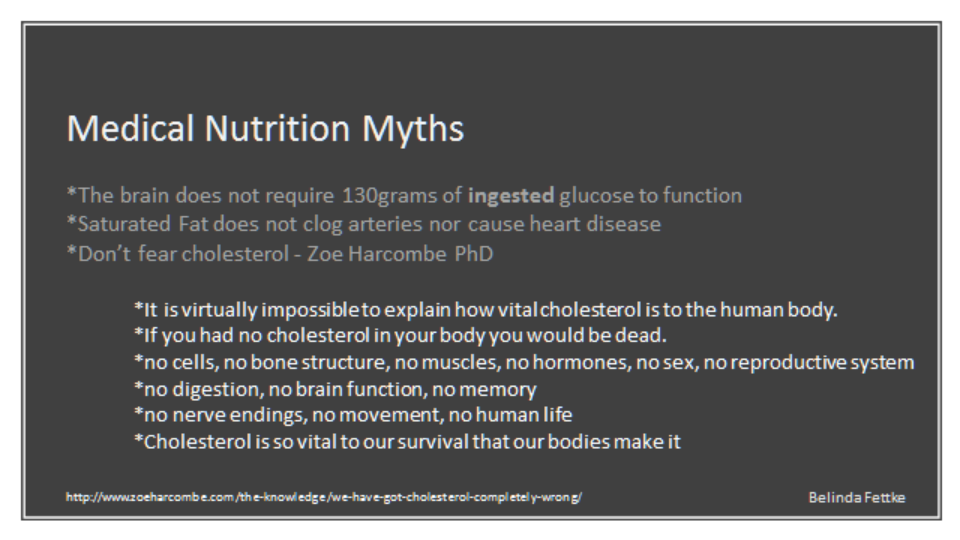
Don’t fear cholesterol - Zoe Harcombe wrote her PhD Thesis on an examination of the randomised controlled trial and epidemiological evidence for the introduction of dietary fat recommendations in 1977 and 1983: A systematic review and meta-analysis and she found that;-
*It is virtually impossible to explain how vital cholesterol is to the human body.
*If you had no cholesterol in your body you would be dead.
*no cells, no bone structure, no muscles, no hormones, no sex, no reproductive system
*no digestion, no brain function, no memory
*no nerve endings, no movement, no human life
*Cholesterol is so vital to our survival that our bodies make it!
There's no connection whatsoever between cholesterol in food and cholesterol in blood. And we've known that all along. Cholesterol in the diet doesn't matter at all unless you happen to be a chicken or a rabbit.
Unfortunately, Ancel Keys - principal investigator of the 7 countries study that influenced the world-wide Low Fat guidelines wrote “Cholesterol in food has no impact on cholesterol in the blood and we’ve known that all along” AFTER the dietary and health guidelines were changed and the food industry had set the wheels in motion to create ‘low fat’ everything.
It isn’t saturated healthy fats but rather sugar, processed carbohydrates, and man-made hydrogenated oils that cause plaques to grow in our blood vessels. Like white blood cells at the site of inflammation, cholesterol is simply there to mop the plaques up. It is like blaming firemen for a fire simply because they are at the scene trying to put the fire out!!
I highly recommend taking a look at Dave Feldman’s work on cholesterol. He is able to make his cholesterol levels adjust to the Dow Jones by alternating fasting and a high saturated fat diet. Fascinating stuff …
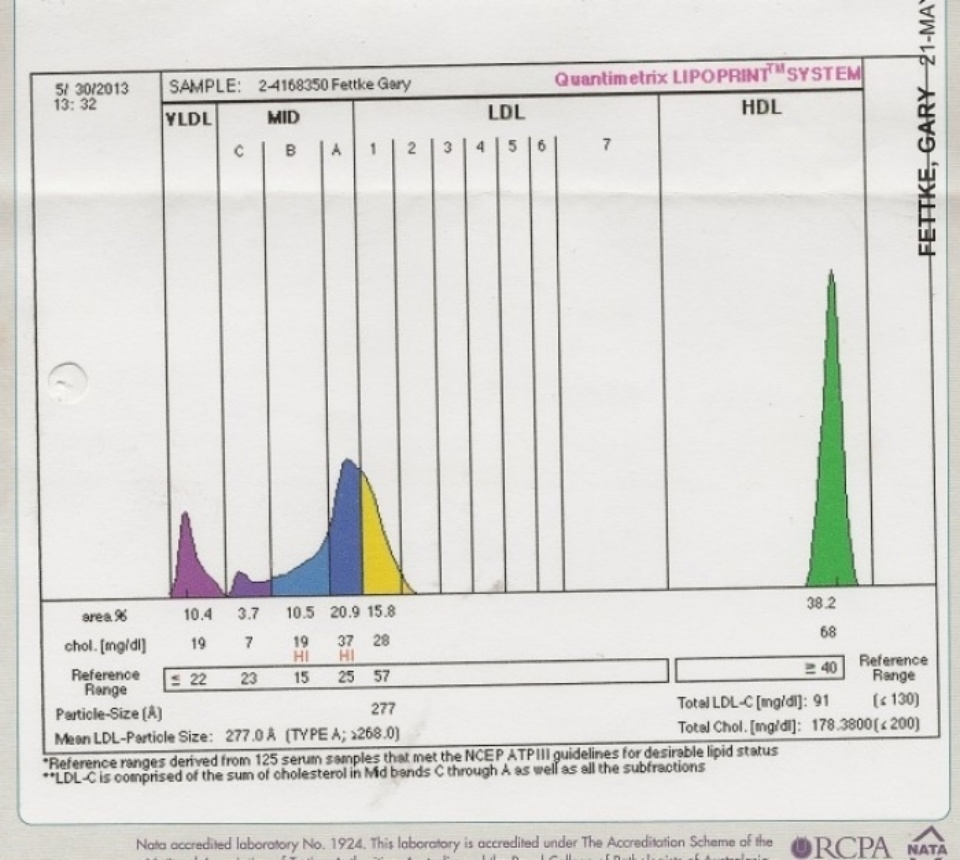
Gary recommends a Lipid Subfraction analysis to tease out cholesterol markers if you or your doctor are concerned. This is Gary’s results on LCHF and he has NO small dense LDL particles.
Type 2 Diabetes does NOT have to be a 'Chronic Progressive Disease'!
One of the most important Myths to bust is the claim that Type 2 diabetes is a chronic progressive disease … because it does not have to be!
After Gary’s health began improving by reducing sugar and processed carbohydrates from his diet he started to consider how it may also help his patients with weight-related joint issues, inflammation, and the complications of diabetes. He started recommending patients consider reducing their sugar intake in 2013.

According to Diabetes Australia 280 Australians develop Type 2 diabetes every day. That’s one person every five minutes.
Unfortunately, people with Type 2 diabetes aren’t always getting the right information.
Many are unaware that carbohydrates end up as glucose in the blood stream and high amounts cause a rise in blood glucose levels, regardless of whether they are Low Glycaemic Index or not.
They aren’t always being told that low fat products may have a significant amount of added sugars/sweeteners to improve palatability.
They aren’t always being told that insulin is a fat storing hormone and a side-effect of excess insulin is weight gain.
They aren’t always being told that weight gain causes insulin resistance which will mean they require even more insulin! It becomes a vicious cycle.
And they aren’t being told that there is another approach to managing their disease. Normal Blood Glucose levels can be achieved by reducing sugar and processed carbohydrates from the diet.
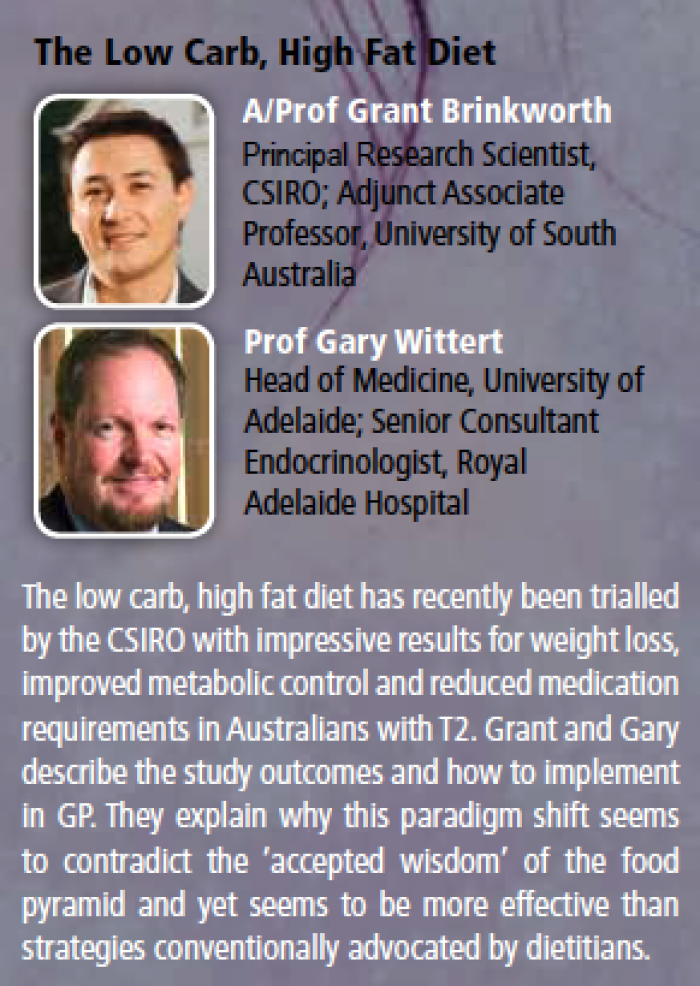
Professors Grant Brinkworth and Gary Wittert presented a series of Masterclasses to General Practitioners around Australia in 2016 on the back of researchers "developing a diet and exercise program which has proven to be highly effective in reducing the burden of type 2 diabetes, with an average 40 per cent reduction in medication levels."
"The diet incorporates an eating pattern that is very low in carbohydrates and higher in protein and unsaturated fats (please note: Virta Health, in the US, are getting even better results with Low Carb Healthy Saturated Fats)."
"The program is based on the findings from a $1.3 million National Health and Medical Research Council (NH&MRC) funded study, which compared the low carbohydrate eating pattern with the current best practice approach of managing type 2 diabetes with a high-unrefined carbohydrate, low fat diet."
"The research results are ground breaking," Associate Professor Grant Brinkworth, principal research scientist at the CSIRO said.
Some of the participants managed to cease their medications altogether, and many described the study as life changing
"Health professionals have been divided over the best dietary approach for managing type 2 diabetes, and the ongoing uncertainty is a hotly debated topic amongst clinicians and researchers.
"The most amazing benefit of the low carbohydrate diet was the reduction in the patient’s medication levels, which was more than double the amount than the volunteers following the lifestyle program with the high-carbohydrate diet plan."
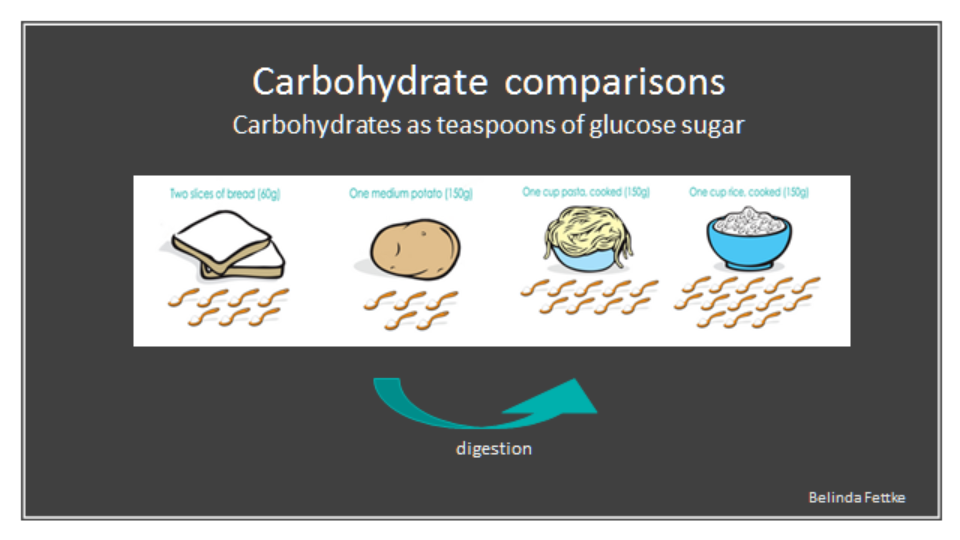
These are some interesting carbohydrate/glucose sugar comparisons to consider...
2 slices of bread convert to 28 grams of glucose sugar when ingested. As there are 4 grams of sugar in a teaspoon - 28 grams of glucose sugar is the same as 7 teaspoons.
And one cup of cooked rice converts to 52 grams of glucose sugar which is 13 teaspoons.
Remember, an excess intake of carbohydrates provokes an insulin response. We have only one teaspoon of glucose sugar in the 5 litres of circulating blood we constantly maintain in our body, so any extra gets converted and stored as fat.

You will see in this image that simply swapping the wheat pasta for zucchini noodles reduces the carbohydrate content of the meal from 62.5g of carbs to only 5.9 grams of carbs and there is no difference in cost … just a few more minutes preparation time. Sometimes we put bolognaise meat sauce on a pile of steamed or roasted veggies to make the preparation even quicker and easier!
WHO recommendations - no more than 6 added teaspoons of sugar per day
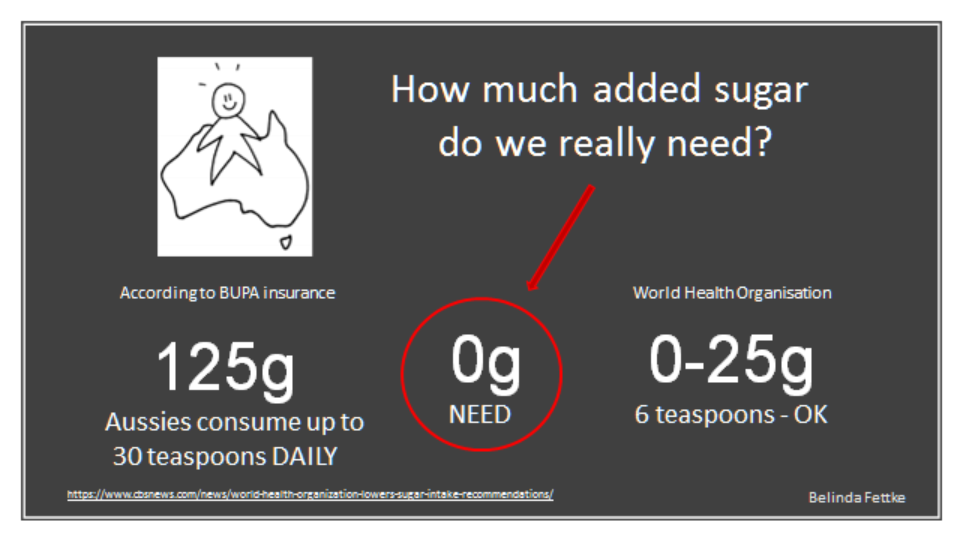
So, we have dispelled the myth of needing 130 grams of ingested glucose for our brain to function.
How much sugar do we really need each day?
In an attempt to tackle the tsunami of obesity and chronic disease world-wide the World Health Organisation revised recommendations on sugar consumption in May 2014.
*Adults & children over 2 years are encouraged to consume less than 6 teaspoons of added sugars per day
*Children under 2 years are advised to consume none. ZERO added sugars per day…
According to health insurer, Bupa - Australians consume, on average, 125g of added sugars daily! Remembering there are 4 grams of sugar per teaspoon, 125 grams converts to 30 teaspoons of added sugars each day!
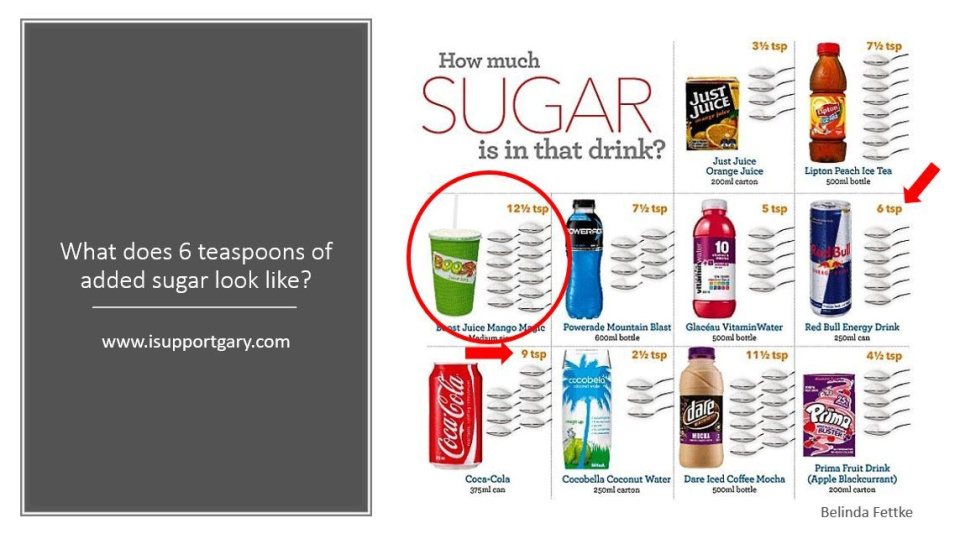
What does 6 added teaspoons of sugar look like in a sugary drink?
Red Bull has 6 teaspoons.
Boost Juice has 12 ½ teaspoons of sugar which is 3 ½ teaspoons more sugar than a can of coca-cola!
You can see how easy it is to consume excess sugar in drinks.
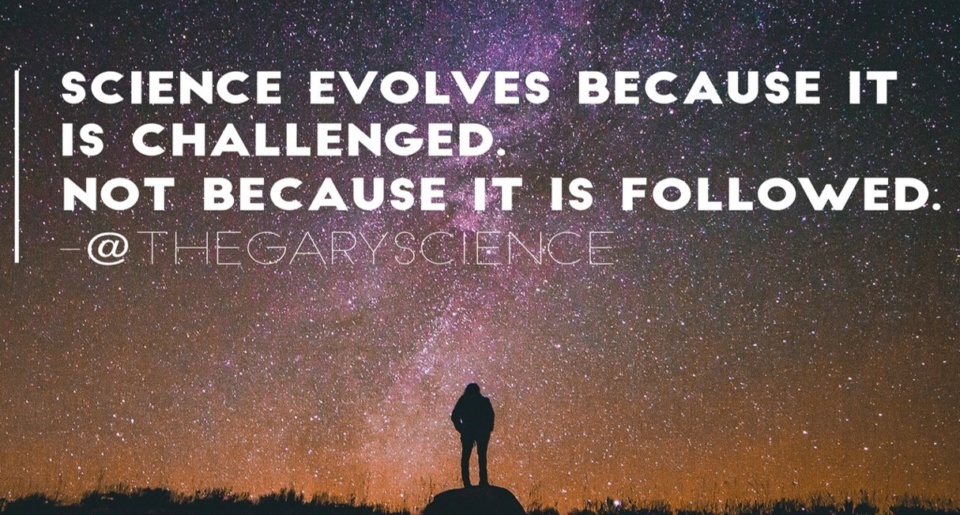
Science evolves because it is challenged, not because it is followed.
Gary was the first Orthopaedic Surgeon in Australia to use straight arm casting for forearm fractures in children after researching the benefits from studies in China and seeing the incredible outcomes they were achieving with this technique.
Gary’s refusal, more than twenty years ago, to perform ELECTIVE surgery on smokers - without a six-week interim break - caused a lot of heated discussion and some ridicule amongst his peers at the time. In his defence, Gary had researched the post-operative risks associated with compromised circulation in patients who smoked, and he believed it to be his duty of care to reduce the peri and post-operative risks. He wanted his patients to have the best possible outcomes from surgery and refused to defer to others’ opinions just because they felt he was being stubborn and pragmatic.
The harms and complications of smoking are now well understood and are widely documented.
How times have changed! I can remember the Pink Ladies bringing cigarettes to bed-ridden patients when I first started nursing AND having to clean the ashtrays!
LCHF - The Missing Piece of the Health Jigsaw Puzzle
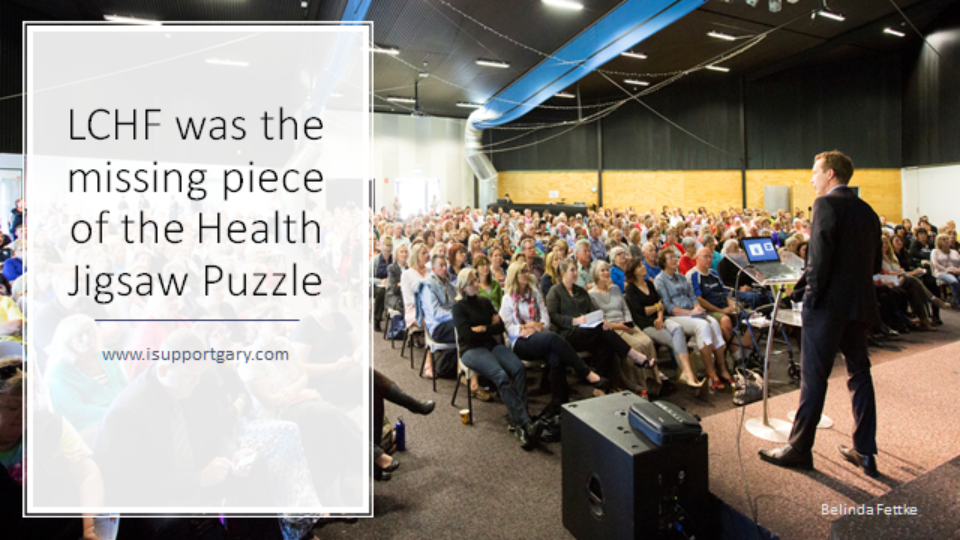
With Gary’s interest in nutrition aroused, he was keen to find out how he might apply this knowledge to his Orthopaedic Practice.
Excited by the thought that he could provide tangible strategies to help people take back control of their health, Gary wrote a handout sheet for his patients who were interested in understanding more about reducing sugar. The handout offered simple swaps and ways to help people get started on reducing sugar in their diet.
Gary was encouraged by family and friends to start speaking to our local community in 2014 and our daughter Megan, and I, helped him set up his Facebook Page 'Gary Fettke No Fructose’ to reach a wider audience.
After years of feeling like he was simply band-aiding sick-care, Gary was so excited to find LCHF, which for him became the missing piece of the health jigsaw puzzle.
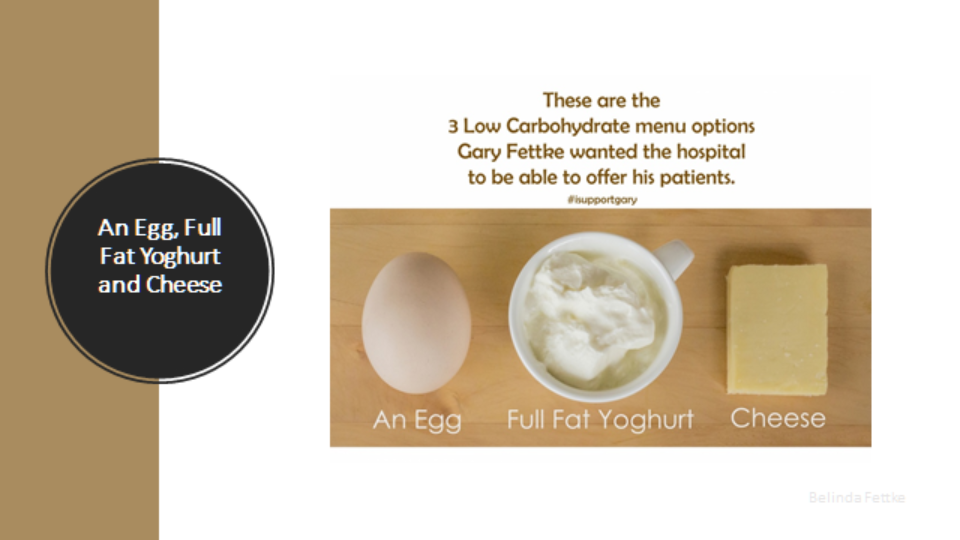
These … are the ‘dangerous foods’ Gary wanted his patients to have as an option, while inpatients in the public hospital system, instead of the sugary processed breakfast cereals, carbs and custards on offer. Patients with non-healing wounds and uncontrolled blood sugars need to have protein and healthy fats.
Gary tried numerous times to speak with the dietetics department, firstly to ask their opinion on the growing research around sugar and diabetes management.
I honestly can't tell you how excited (and naive) Gary was when he first understood the link between sugar consumption and diabetes complications, and what reducing sugar could mean for his patients’ health outcomes.
Unfortunately, the dietetics department weren't as excited as Gary was. Instead, internal correspondence was sent to various key administrative staff complaining about Gary AND copying in the Minister for Health.
After Gary questioned 'the fairness of that gesture’ and specifically, the content of the email, he was informed by the Allied Health Department that an apology letter had been written on February 18th 2014 and was sitting on the then CEO's desk for him to collect.
The apology letter sat on the CEO's desk despite Gary requesting it on multiple occasions. Gary felt he was baited when false promises to meet with the CEO were proffered and then rescinded, over and over again. Gary finally received his apology letter on July 23rd, 2015 3 months after a new CEO took over. 16 months after it was first written!
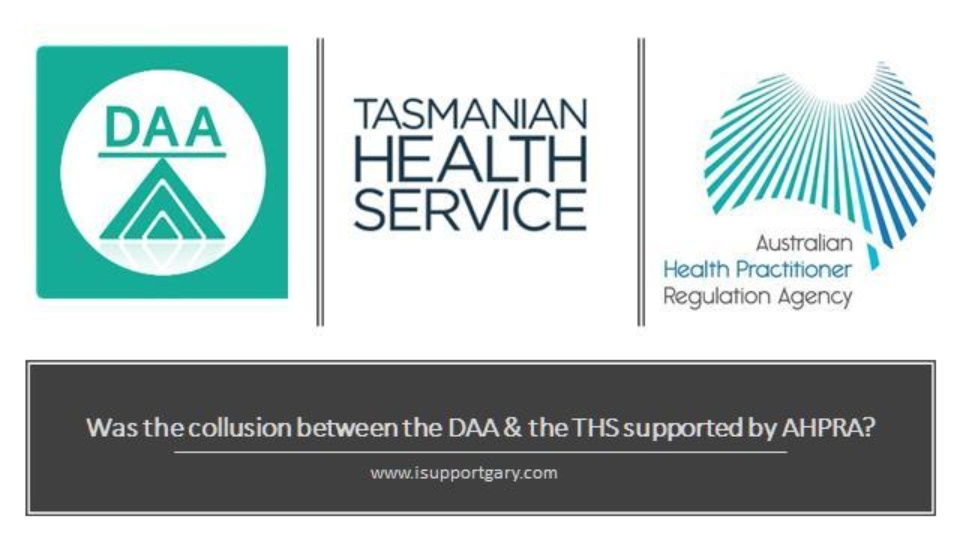
In November 2018 Gary was given access to a vexatious, unsubstantiated 845 page submission to AHPRA that was collated by the Director of Medical Services, on behalf of the Tasmanian Health Service. The same Director of Medical Services that was posting defamatory material about Gary on a Facebook Hate Page around the same time. Not only did the Director of Medical Services collate the extensive submission but he started the submission with the words "My issues with Dr Fettke are ... "
Within the document Gary found 2 letters from the CEO of the Dietitians Association of Australia (the DAA) addressed to then CEO of the Launceston General Hospital (LGH) effectively demanding that he be 'Silenced'.
Incredibly, the CEO of the LGH wrote to the Director of Medical Services, copying in 3 other people and asking "Can we push this along to the next level?" A short time later Gary was 'conveniently' reported to AHPRA.
I believe Gary has been punished for raising issues of Quality Assurance and Patient Safety in his workplace. Gary was thrown into the too hard basket by the THS and they used the Tasmanian Medical Board of AHPRA to deal with him.
Gary was subsequently investigated ‘behind closed doors’ for 2 1/2 years with no case of patient harm, nor patient complaint. AND no recourse against the dietitian who lodged the vexatious complaint in the first place.
The Personal and Professional cost of being a Change Agent in the Health System
There is no doubt there is a cost to being an advocate for change.
The Personal Cost is hard to put into words.
I remember Gary and I being filled with disbelief when he received his first notification from AHPRA in 2014. It hurts to be charged as guilty when you haven’t committed a crime.
Finding defamatory postings about Gary by the Director of Medical Services at the LGH on a Facebook hate page was disturbing. While he was stopped, the admin on that page have continued to bully Gary, myself and the team at Nutrition for Life for over 3 years. Every now and again they post inappropriate commentary and question Gary’s character and belittle him. They have thrown up our business ABN and shared links with directions on how to report Gary to AHPRA. The language used has been disgusting and at times caused distress for our family and friends.
One of the original admins recently tweeted that Gary was simply 'another Belle Gibson'. I find this accusation defamatory and highly inappropriate from anyone, but coming from an Accredited Practising Dietitian AND SPOKESPERSON for the DAA is beyond belief ...
Luckily, we have friends who monitor the page and screen grab everything for us, so we don’t have to go near such negativity anymore.
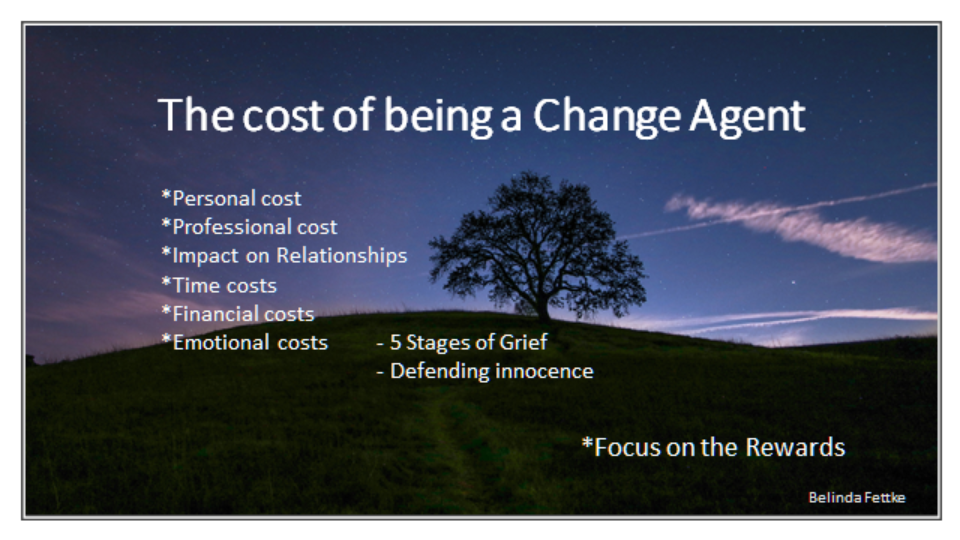
The biggest Professional Cost to Gary is the very real threat of deregistration if he continues to provide nutrition advice to his patients.
I am proud of him for refusing to respect AHPRA’s ridiculous and petty decision. Gary would rather be deregistered for improving patient outcomes and saving lives, than abide by a ruling that has the potential to create harm.
Professionally, the bullying, harassment and mobbing behaviour within the workplace, from senior administration down succeeded in making Gary feel unsupported. He had lolly wrappers stuck into his locker, posters for upcoming talks defaced and a dagger drawn through the stomach of our kitten on a picture that was part of a team building exercise in theatre.
People were worried about appearing to ‘side’ with him at work. Early on colleagues spoke quietly and told Gary of their support for him, but very few publicly. In fact, someone told Gary that a directive had gone around to all staff telling them that no one was to speak to Gary about nutrition. The topic was off limits!?!
The most confronting incident was when Gary received a letter threatening him with losing his academic position at the university if he went through with the opening of Nutrition for Life, the business we co-founded in August 2014. The letter was written by a member of the Tasmanian Medical Board just a few weeks after Gary was notified about being under investigation by AHPRA. Gary was timetabled out of his medical student teaching position, which upset him greatly as teaching students was something he loved doing.
Gary had research projects within the hospital, and at the university, cancelled with no explanation.
Early on Gary lost some referrals from GP’s but they have mostly come back over time. I guess people weren’t sure and the rumour mill was running wild.
We know of the strain being investigated puts on families and have seen marriages unhinge. Gary and I tend to tuck ourselves away when things get a bit overwhelming. The thing that upsets me the most is the injustice of Gary’s situation, and others being investigated for vexatious notifications by the AHPRA medical board. The stories people share with us battling the system because of rigid guidelines and the feeling of their helplessness breaks my heart.
But, the rewards are beyond our expectations. The stories we hear and the support we have received both locally, and from all over the world, is amazing. I am really enjoying researching and studying the history of dietetics and nutrition. Gary has taken up golf again and is loving it. We have a gorgeous family including a new grandson and we count our blessings everyday.
Going Against the Grain
Gary didn’t really question his medical, or continuing education, despite regularly challenging paradigms when new science was presented on things like infection risks, DVT prophylaxis, and smoking on surgery outcomes, until his own health became compromised again in 2011/12.

He had to find another way to stop his cancer from being active. The chemo wasn’t holding it and he didn’t think he could go through surgery again.
Giving up sugar, processed carbohydrates and reintroducing healthy fats back into his diet has stopped his cancer in its tracks. It is our miracle and our biggest reward!
I continue the rest of my talk in Part 2 found here.
Remember to go forward with the perspective of a patient, the spirit of an activist, and the heart of a healer.
Thank you.
